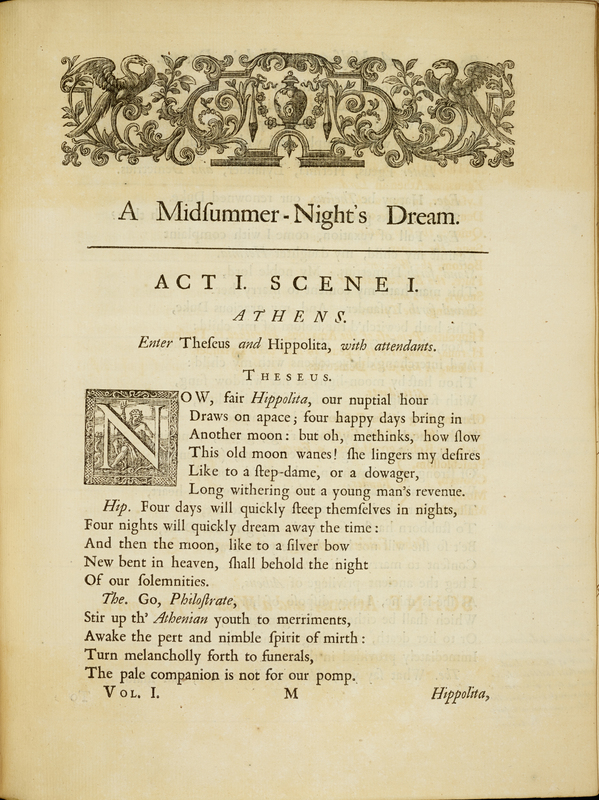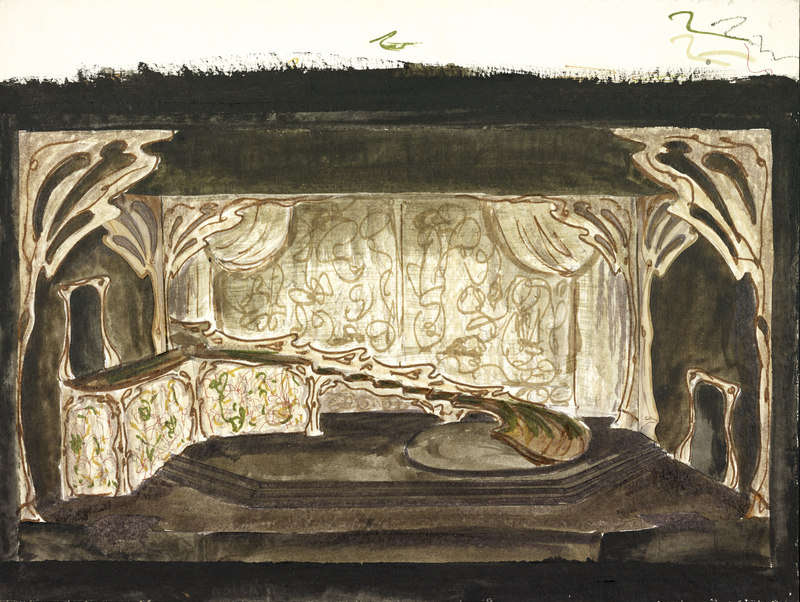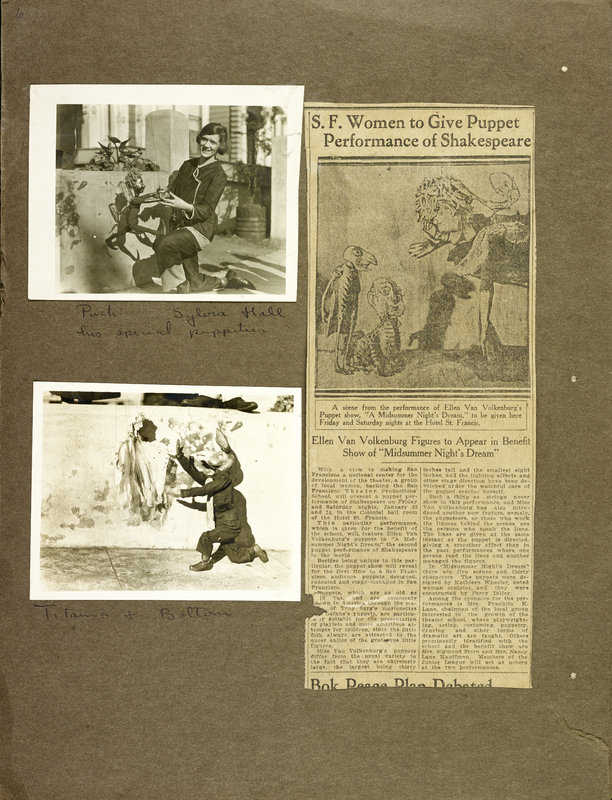Building Worlds
Cymbeline: Ancient Britain in Art Nouveau
Written around 1609-1610, Cymbeline shares the mythic character and genre-mixing qualities of Shakespeare's other late plays. The story is set during the reign of King Cymbeline in Ancient Britain. Cymbeline's two sons are kidnapped in infancy, leaving his daughter Imogen as heir. When Imogen secretly marries outside of royal bloodlines, her husband Posthumus is banished to Rome, where he wagers with the villainous Iachimo that Imogen is too virtuous to be seduced in his absence.
Cymbeline is especially significant to the University of Michigan because its 1973 performance marked the U-M Players' completion of the thirty-six plays of the First Folio. U-M was the first educational theater to reach this landmark accomplishment and only the seventh theater of any kind.
In a pre-production letter to U-M Professor of Theatre and Drama, Zelma Weisfeld, director William P. Halstead placed emphasis on the intimate, familial drama, and the fairy-tale aspects of the play. To support this interpretation, Weisfeld designed a set in which a swirling central ramp beneath art-nouveau-style filigreed arches suggests a mock-medieval atmosphere.
A Midsummer Night's Dream in Miniature
A Midsummer Night's Dream is not without occasional dark undertones -such as Hippolyta's status as a forcibly captured bride and the cruelty of Oberon's trick against Titania- but throughout most of its performance history, these aspects have been downplayed in favor of presenting this comedy as a lightheartened fantasy, frequently aimed at an audience of children.
Such is the case with Ellen van Volkenburg's whimsical marionette production, which debuted in 1916 at the Chicago Little Theatre, and later appeared in New York (1920) and San Francisco (1924). As one 1924 review enthused, "Observers are made to feel as if they had suddenly been transferred to some fairyland of dreams. These sprightly puppet characters are made real in their silk-clothed figures of wood."
One of van Volkenburg's key innovations was to train her puppet manipulators to voice the characters, in this way ensuing a close unity between word and motion. Van Volkenburg also took care to treat the show as a full-fledged stage production, complete with miniature sets, carefully planned green stage lighting to establish an atmosphere of sun-and-moon dappled woodland, and sound effects representing the "buzzings, hummings, and twitterings" of forest life.

Editing Shakespeare

Embodying Characters




